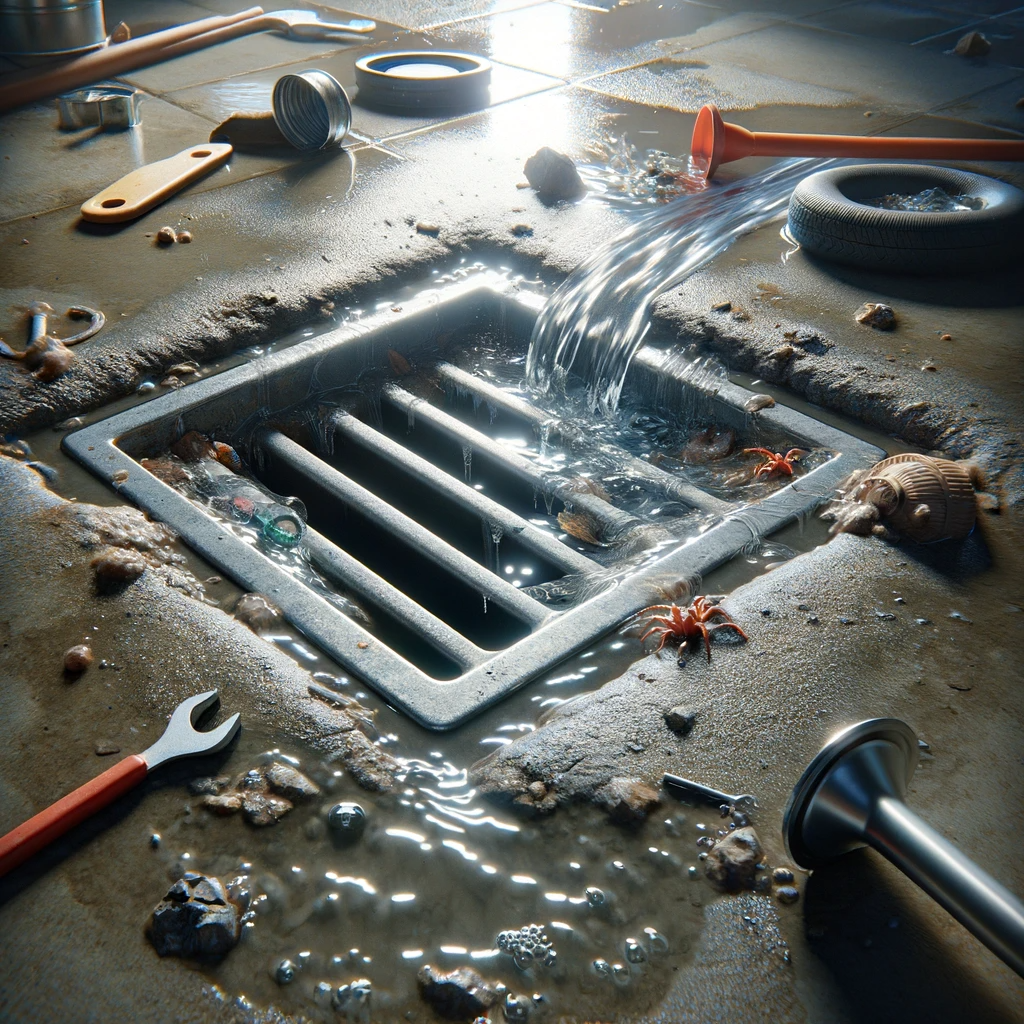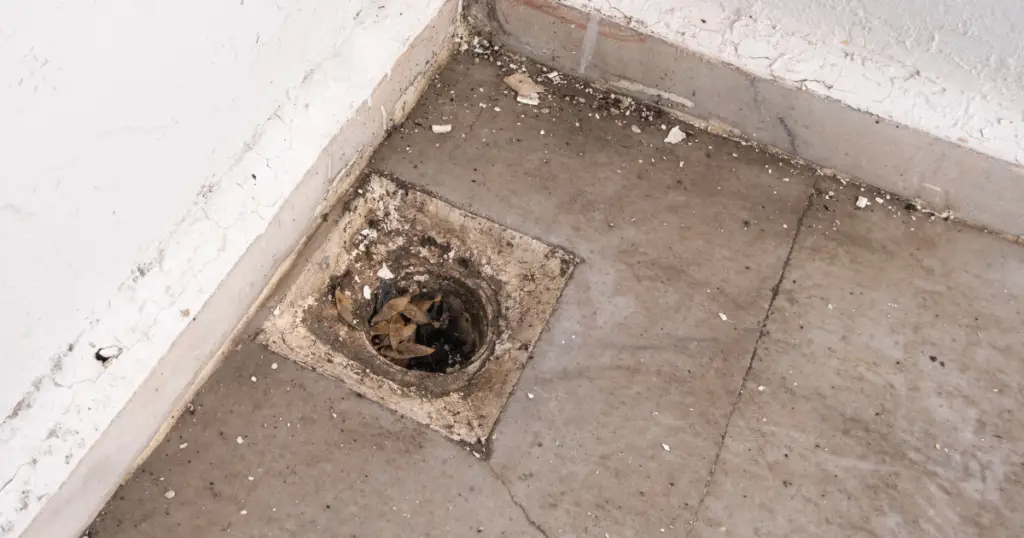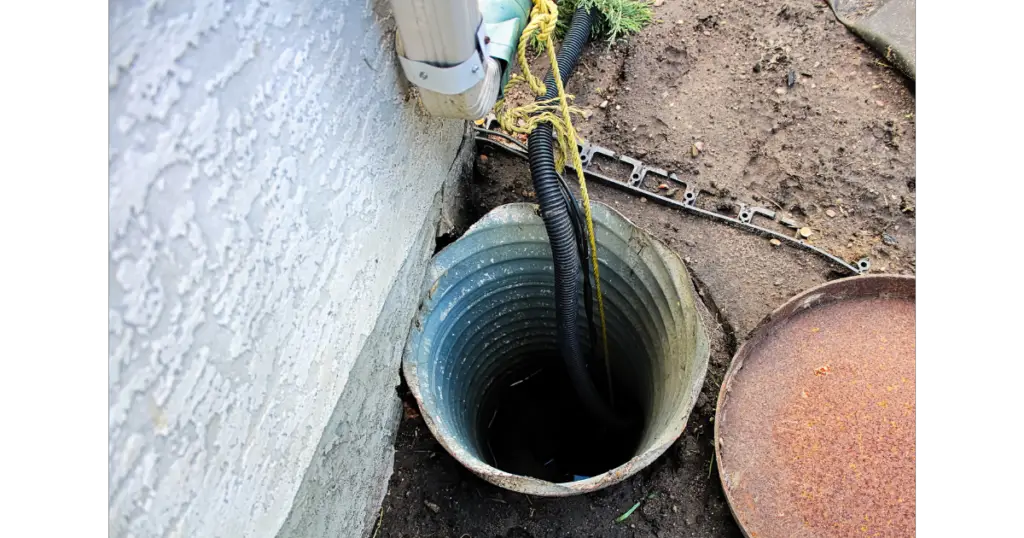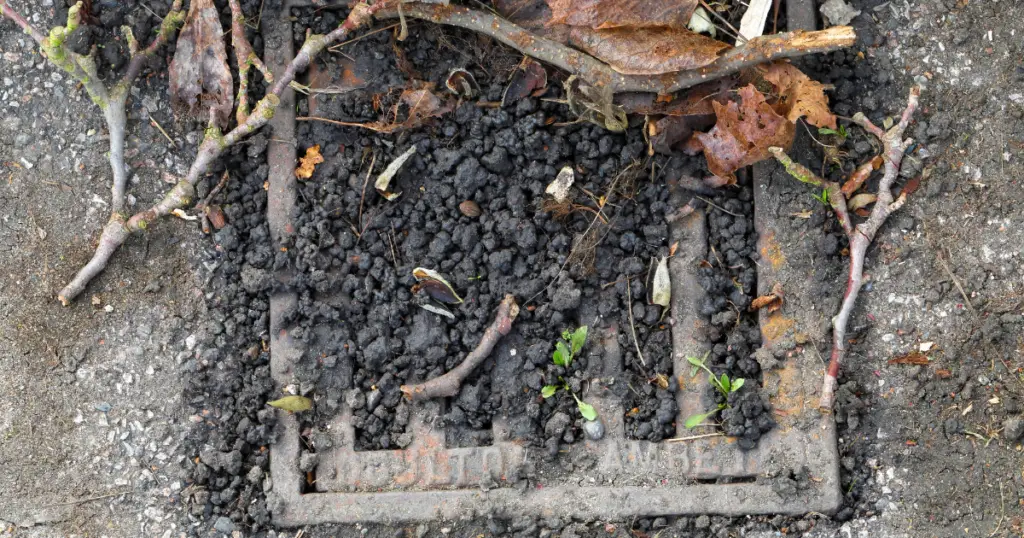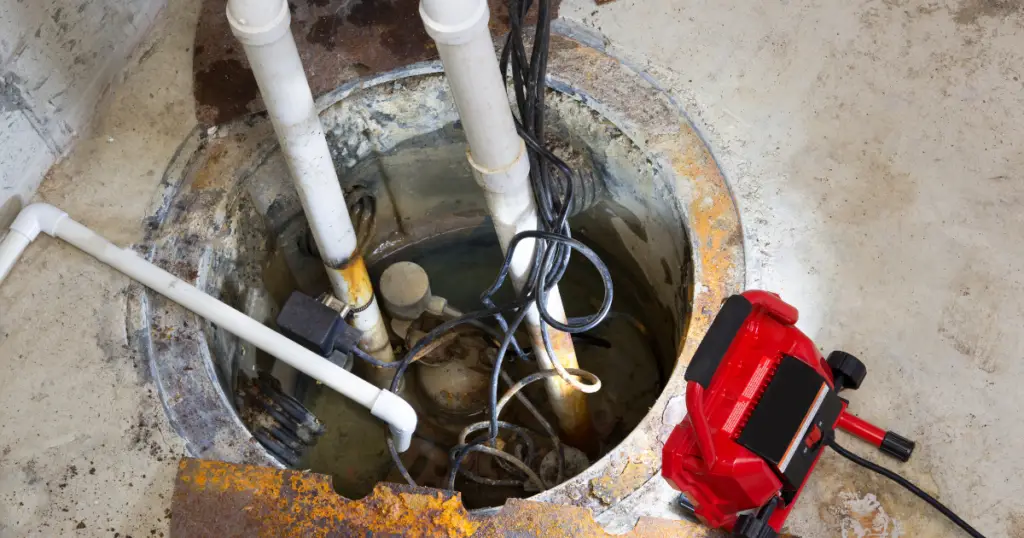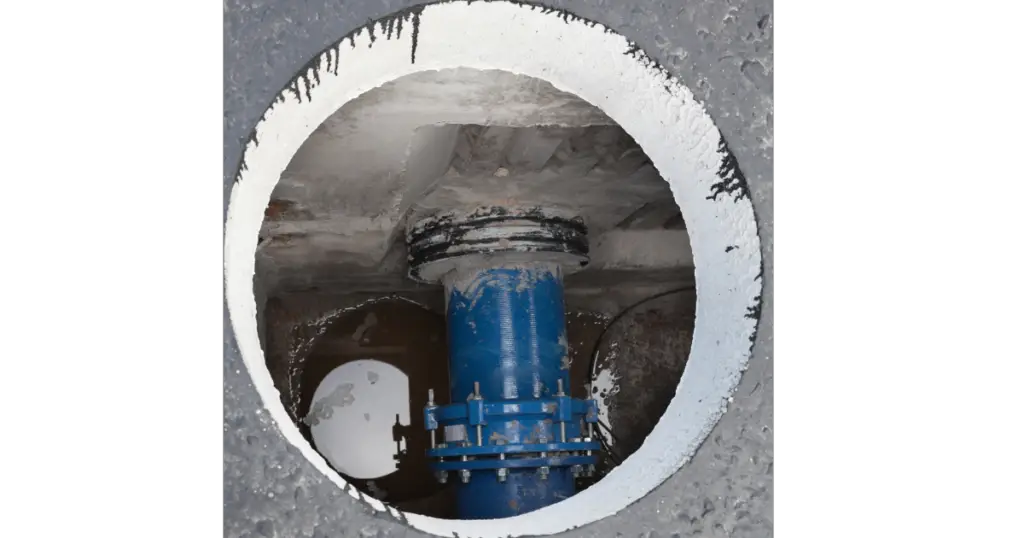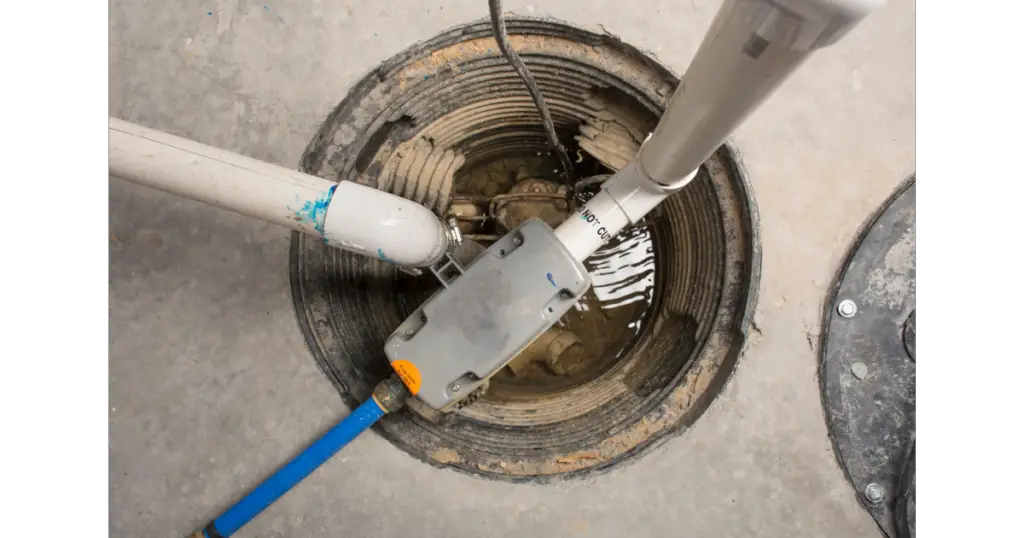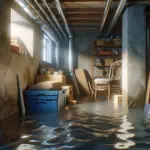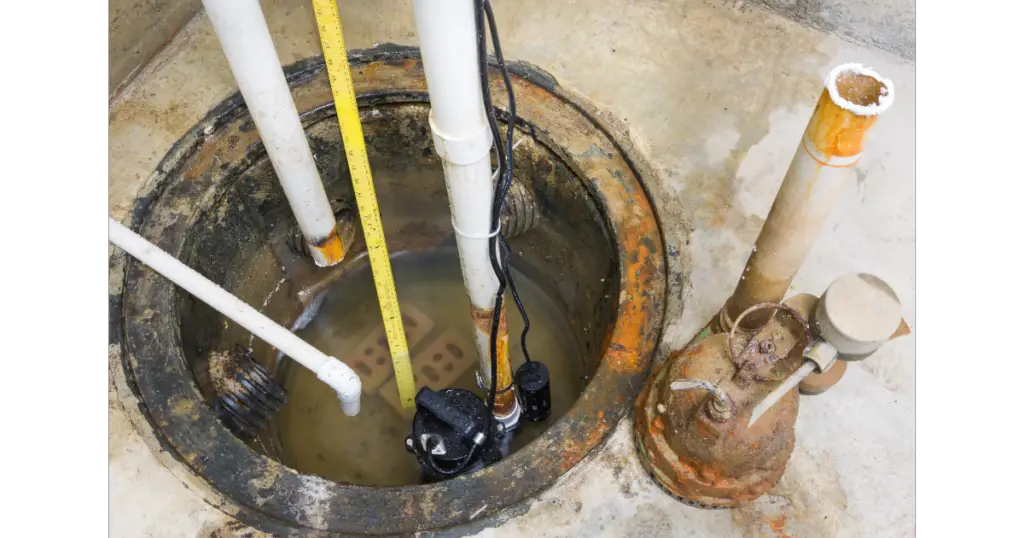
Is your home experiencing a clogged basement floor drain? Have you noticed that the water in the drain is backing up instead of draining away naturally? This is a common issue that happens when the basement drain gets clogged, but there are solutions available to clear it out and get your basement back to normal.
In this article, you will find all the necessary information to help you be prepared when dealing with a clogged basement floor drain and standing water.
What is a floor drain?
A floor drain is a type of plumbing fixture typically found in the floor of a basement, garage, or other enclosed space that is designed to collect and divert water away from the area and prevent flooding. It features a grate on the top that allows water to enter the drain, and then it is connected to a sewage line or pipe that directs the water away from the home. Floor drains are designed to help prevent flooding and keep basements dry by providing an outlet for excess water.
Why do I need a basement floor drain?
A basement floor drain is an essential component of any home plumbing system. Its primary purpose is to collect and divert water away from the property, thus preventing damage that can be caused by standing water in the basement. Additionally, it acts as a first line of defense against flooding due to heavy rains or other sources.
A basement floor drain provides numerous advantages, including but not limited to:
- Helping to prevent flooding by providing a way to quickly remove water or any other liquids that may accumulate in the area.
- Capturing and removing sediment, dirt, and debris before they enter the house’s interior plumbing system. This helps prevent blockages and damage to your pipes.
- Acting as an emergency outlet for plumbing fixtures that happen to overflow or back up
- Providing a place to tie in sump pumps or water-powered backup systems.
Types of basement floor drains
Floor drains come in two different types depending on the application – wastewater floor drains and groundwater floor drains. Wastewater floor drains are commonly used to remove water and other liquids from buildings, such as bathroom showers or laundry rooms, preventing water damage to the structure. Groundwater floor drains are designed for more specific applications, such as industrial facilities where hazardous fluids including chemicals need to be safely contained and/or removed from a given area.
What causes a basement floor drain clog?
Your basement drain can become clogged due to a variety of different causes. Some of the most common causes are:
Sediment buildup
Sediment, dirt, and debris can accumulate on the walls of your drainage pipes over time. This causes a blockage in your drainage system as the sediment builds up and eventually blocks the water from flowing through. To reduce this buildup, you should regularly have your pipes professionally cleaned out.
Tree roots
Invasive tree roots can enter your drainage system by sneaking into small cracks in the pipes. Not only can these roots cause clogs within the piping system but they can also lead to damaged and weakened pipes due to their size and strength. To prevent tree root intrusion it is important to regularly inspect and repair any cracks or leaks in your plumbing lines.
Grease and oil
Grease and oil from food or other household products can build up on the inside of pipe walls leading to clogs in your drainage system. It is important to never pour cooking grease or oils down drains as this will cause major backups in your plumbing lines.
Flushable items
Paper towels, wipes, diapers, and other items should never be flushed down toilets as they easily become stuck in narrow points in the pipework causing clogs throughout the entire system. Instead of flushing them, you should dispose of these items responsibly to reduce the risk of clogs.
Foreign Objects
Toys, jewelry, or any other type of foreign objects that fall into drains can create blockages when they become wedged in place due to their shape or size obstructing the piping system that prevents water from flowing freely through it again until it is removed manually or with help of a professional plumber who has access to specialized tools for removing obstructions like these safely without damaging the pipe itself too severely if possible at all.
Pipe Deterioration
Pipes may corrode or deteriorate over time due to temperature changes or acidic conditions caused by waste materials going down them which can lead to blockages developing within them from the layered buildup of solidified waste material over time. To reduce this risk it is important to ensure that any waste materials are disposed of correctly so that the pH balance within pipes remains balanced for longer periods preventing corrosion due to deterioration from happening prematurely. As a result, not only are we able to prevent costly repairs that may be required due to neglecting necessary maintenance, but also mitigate the potential health risks associated with untreated sewage materials released into our environment. It is always advised that proper disposal practices should be followed whenever possible for these reasons.
Sewer Sags
Sewer sags can cause serious backups and contamination to your home’s plumbing system. Poor construction, improper installation, or soil displacement could all lead to a section of the sewer line that dips lower than intended. This decrease in elevation will cause standing water which will eventually back up into other parts of the house if left unchecked.
Drain & Trap Dry Out
Traps are designed with a “U” shape which allows them to store a small amount of water that acts as a seal against gas seeping out into living spaces while also allowing wastewater to flow freely when necessary. During extended dry periods, this water evaporates reducing pressure within the trap causing it to collapse instead of providing an effective seal against odors and preventing sewer gases from entering your home’s interior spaces.
What are the signs of a clogged floor drain?
Clogged floor drains can cause various issues such as slow-draining sinks or tubs, bad odors, and in some cases flooding. Here are some of the signs of a clogged floor drain:
- Drains Gurgling: Gurgling sounds coming from the drain could be an indication that there is a blockage preventing water from flowing freely. This could be an issue with the balcony’s drainage system or a sign of sewer line backup.
- Poor Water Flow: Slow draining sink or tub can indicate that there is a clog somewhere in the pipes. Check downstream for any obstructions such as food particles, grease buildup, foreign objects, or sediment.
- Bad Odor: A foul smell might indicate that there is something stuck in the floor drain that needs to be removed to stop it from emitting an unpleasant odor into your home.
- Water Backs Up: If wastewater starts to back up into other areas of your house, then you likely have a serious issue with your floor drain being blocked by debris or tree roots. In this case, it’s important to call your local plumber for assistance.
- Overflowing Drains: If the water isn’t able to flow freely, it can start to build up in the drain. This could cause it to overflow from time to time.
- Discolored Water: Pooling water can start to accumulate rust and sediment, which will make it appear more brown or yellowish than usual.
- Wet Spots Around The Drainage Cover: If you have a floor drain cover, you might notice that there is moisture around it even when the tap is not running. This indicates that there is an issue with a clog causing water to back up into the area.
- Insect Infestation: When drains are blocked, they tend to become breeding grounds for pests such as mosquitoes and other insects due to their damp environment.
What should I do immediately after a water backup in my basement floor drain?
If you experience a water backup in your basement floor drain, here are the steps you should take immediately:
Assess The Situation
Assess the situation to determine the extent of water damage: Examine the affected area and items for signs of standing water, saturation, and rust corrosion.
Call Your Insurance Company
Call your insurance provider and take pictures of the flooded basement: Documenting the damages with photos and video can be used as evidence when filing a claim.
Turn Off Power
Turn off power to prevent potential electrocution or fire: Unplug any electrical appliances and turn off circuit breakers in areas near water sources to protect against shock hazards.
Wear Protective Gear
Wear protective gear such as gloves and goggles to avoid contamination from raw sewage: Safety supplies will help keep you safe when coming into contact with any contaminated materials.
Remove Any Damage Materials And Furniture
Remove any materials that have been damaged by the floodwater, such as furniture or carpets: Discard porous materials such as rugs, padded furniture, mattresses, pillows, etc., which cannot be salvaged after being exposed to contaminants from raw sewage.
Fix Broken or Damaged Pipes
Fix any broken or damaged pipes that may have caused the flooding in your basement.
Dry the Area
Use a wet/dry shop vac, mop, buckets, or towels to remove all excess water: This will help minimize further damage caused by standing water.
Clean and Sanitize
Clean and sanitize all affected surfaces. Use baking soda, vinegar, tea tree oil, and/or mild soap to clean the affected areas. Use bleach (follow the manufacturer’s instructions for diluting bleach with water before cleaning surfaces), antibacterial, and mold inhibitor products to sanitize and protect your home. Work from top to bottom when cleaning walls and floors so dirt does not drip onto areas that have already been cleaned.
Keep An Eye For Mold
Keep an eye out for mold growth on surfaces even after they have been cleaned and sanitized: Look for discoloration or dampness in wall corners or along edges where the carpet meets the wall base. Check behind cabinets or furniture that may have retained moisture following cleaning efforts. If mold growth is observed following clean-up efforts contact a professional immediately.
Professional Help
If the situation is more serious than you can handle, don’t hesitate in contacting a professional for assistance with the water damage and clear out the basement floor drain: A qualified technician can utilize specialized equipment such as pumps, dehumidifiers, air movers, and blowers to ensure all standing water is removed from your basement floor drain quickly and efficiently without causing further damage through improper handling of the situation.
How to unclog Basement floor drain?
Is your basement floor drain clogged? If so, you know how frustrating it can be! It’s important to act quickly and efficiently when fixing a clogged basement drain, as the problem can quickly become worse if not addressed properly.
Here are some steps on how to unclog a basement floor drain:
- Locate the source of the clog. Many times this is the result of debris or hair that has blocked the pipe and prevented water from draining.
- To loosen debris or hair, use either a vacuum or a plumbing snake (it’s best to wear gloves for safety).
- Once the obstruction is cleared, pour one cup of baking soda followed by two cups of white vinegar down the drain line. This will help clear any remaining debris from the pipes and promote proper drainage.
- After five to ten minutes have passed, pour at least two gallons of boiling water down the drain to flush away any remaining residue in the pipes and ensure smooth drainage.
- If your basement floor drain is still backing up after following these steps, you may need to call in a professional licensed plumber to investigate further and find a solution for your particular situation- they’ll be able to use a mechanical drain cleaning machine to unclog it.
How to prevent my basement floor drain from clogging?
Prevention is key when it comes to avoiding a basement floor drain clog! Here are some tips on how to prevent your basement floor drain from getting clogged:
- Use a Plunger: A plunger can be used to unclog minor blockages caused by hair, soap scum, and other debris.
- Use a Cup of Hot Water: If a minor blockage has formed, try pouring one cup of hot water down the drain and see if that helps break up and flush out any debris that may be causing an obstruction.
- Check Washing Machine Hoses: Make sure your washing machine hoses are secured tightly and without any kinks, as this could cause water backup into your basement drain.
- Clean Pet Hair Regularly: Pet hair is one of the main causes of clogged drains, so make sure you clean up pet hair regularly around the house to avoid buildup in your main sewer lines or main drain.
- Install a Sump Pump: Installing a sump pump in your basement will help prevent flooding in the event of heavy rains or broken pipes in the area. Sump pumps will divert any incoming water away from the drainage system and out of the home, preventing backups into your basement floor drains.
- Pour Boiling Water Down the Drain Regularly: This can help clear out any built-up soap scum or grease residue that could lead to clogs in your basement floor drains over time.
Does homeowners insurance cover basement water damage?
Homeowners’ insurance typically covers water damage to basements resulting from personal property, such as pipe bursts or appliance malfunctions. However, it is important to examine your specific policy to ensure that you are covered in the event of a basement water damage claim.
Depending on the situation, you may need additional coverage for damages due to flooding, sewage backups, and more. Make sure to speak with your insurance provider if you have any questions about what is or isn’t covered in your policy.
Call a Professional
A clogged basement drain can cause serious water damage, and it’s important to act quickly to prevent further damage. Calling a professional is the most efficient way to handle the problem immediately. A skilled technician can identify the source of the blockage and use a mechanical drain cleaning machine to break through even the toughest clogs. They’ll also be able to inspect your pipes for any other potential problems that could result in future clogs or water damage. Don’t wait – call a professional as soon as possible when you experience any drainage issues in your basement.
[/et_pb_text][/et_pb_column][/et_pb_row][/et_pb_section]
